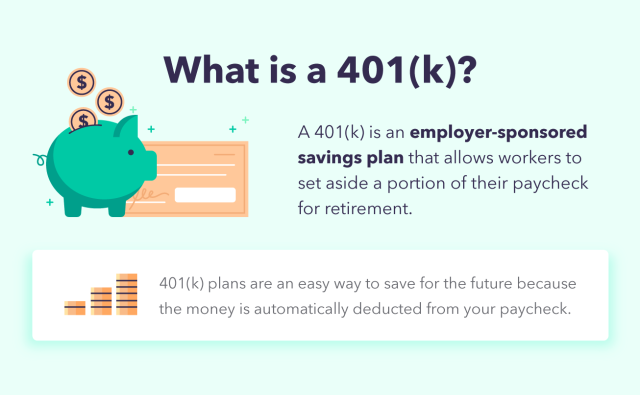There are a lot of things that need to be taken into account before maxing out your 401(k) plan. There are bills, mortgage payments, and other expenses that need to be paid. However, if you can find room in your budget, it’s worth taking advantage of your employer’s matching contributions and maximizing your retirement savings.
Maximize Your Employer Match
Your employer may match your contributions to a certain extent, which is free money that can help you boost your retirement savings. Normally, the company will match dollar-for-dollar up to a certain percentage of your salary. It is essential to ensure you are contributing enough to receive the full amount of your employer’s contribution. But what is a 401(k) retirement plan?
Most 401(k) plans have a vesting schedule, meaning you will become fully vested in the employer’s matching funds over time. This is a great way to encourage employees to stay with the company longer and helps reduce the risk of employee turnover. If you are considering a job change, ensure you understand the vesting schedule for your 401(k) plan before making the switch.
While maximizing your employer match is a good idea, you should not neglect saving for other goals, such as paying off high-interest debt. Investing your 401(k) dollars in low-cost mutual funds that do not charge substantial fees is also a good idea.
Increase Your Contribution Rate
If you want to maximize your retirement savings, increasing your contribution each year is important. A simple 1% increase can greatly affect your final retirement nest egg. This is especially true when your money earns interest or capital gains, and those investments are re-invested automatically. This process is called compounding, and it magnifies your savings over time.
If your employer offers a matching program, take advantage of it. Even if you are not able to contribute more than the percentage of your salary that your employer will match, try to get as close to that number as possible.
Increasing your contribution rate each time you receive a raise is also wise. Rather than spending the extra money on a new designer bag or vacation, consider spending at least half of it on your 401k.
Of course, you must still prioritize other financial goals and pay down high-interest debt, but after doing so, try to save as much as your budget allows. Individuals can contribute up to $22,500 in salary deferrals per year (or $30,000 if over age 50), one of the best ways to grow your retirement savings.
Maximize Your Earnings
Even if you aren’t saving enough yet to take advantage of your employer’s match, it is essential to increase your contribution rate as often as possible. Putting extra money toward retirement can be more rewarding than frittering it away on unnecessary expenditures. A common challenge of moving into your prime earning years is “lifestyle creep.” Spending a big chunk of every salary increase on a new car or vacation is tempting.
Ideally, you’ll also consider using any one-time windfalls, such as tax refunds or inheritances, to ramp up your contributions. But be sure to pay off high-interest debt first.
Depending on how much you need in retirement to maintain your lifestyle, saving even more than the recommended 10% to 15% of your income may be necessary. Don’t forget to maximize the potential of your investment accounts by taking advantage of any matching funds offered by your employer or investing in Roth options. It’s also a good idea to diversify your portfolio and avoid becoming too heavily invested in company stock that could fall during a difficult economic period. A financial advisor can help you develop a strategy for saving enough to meet your retirement goals.
Maximize Your Taxes
As you retire, taking steps to maximize your tax benefits is important. The 401(k) is a great place to start, but you should consider an individual retirement account (IRA). IRAs offer more investment options than your employer’s plan and can help you lower your taxable income. You should save up to the maximum allowed in your 401(k) if you can afford it. Fidelity recommends saving up to the match threshold first, then increasing your contribution rate as you get raises or other salary increases. Some financial planners even advocate contributing up to 20% of your salary, though achieving that level isn’t realistic for everyone.
When it comes to withdrawing funds, many people choose a lump-sum distribution from their 401(k) plans, which can be an effective strategy in terms of tax efficiency. However, this can be risky because it could push you into a higher tax bracket. Another option is to choose a proportional withdrawal method from your different accounts. This involves taking a calculated percentage of money from each account, which can result in more stable withdrawals and potentially lower overall taxes in retirement. If you’re unsure which strategy suits your situation, consult a qualified tax advisor.

